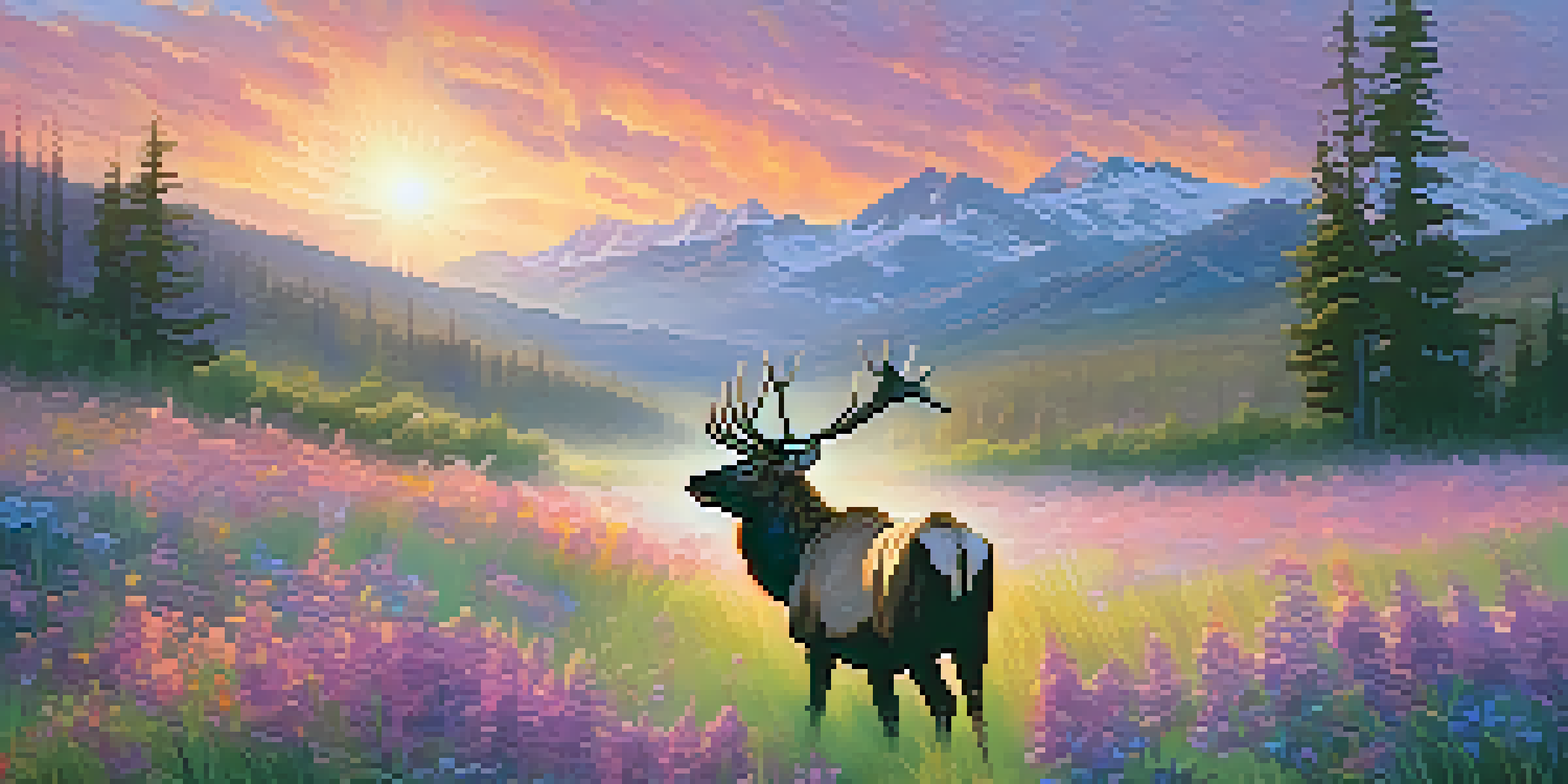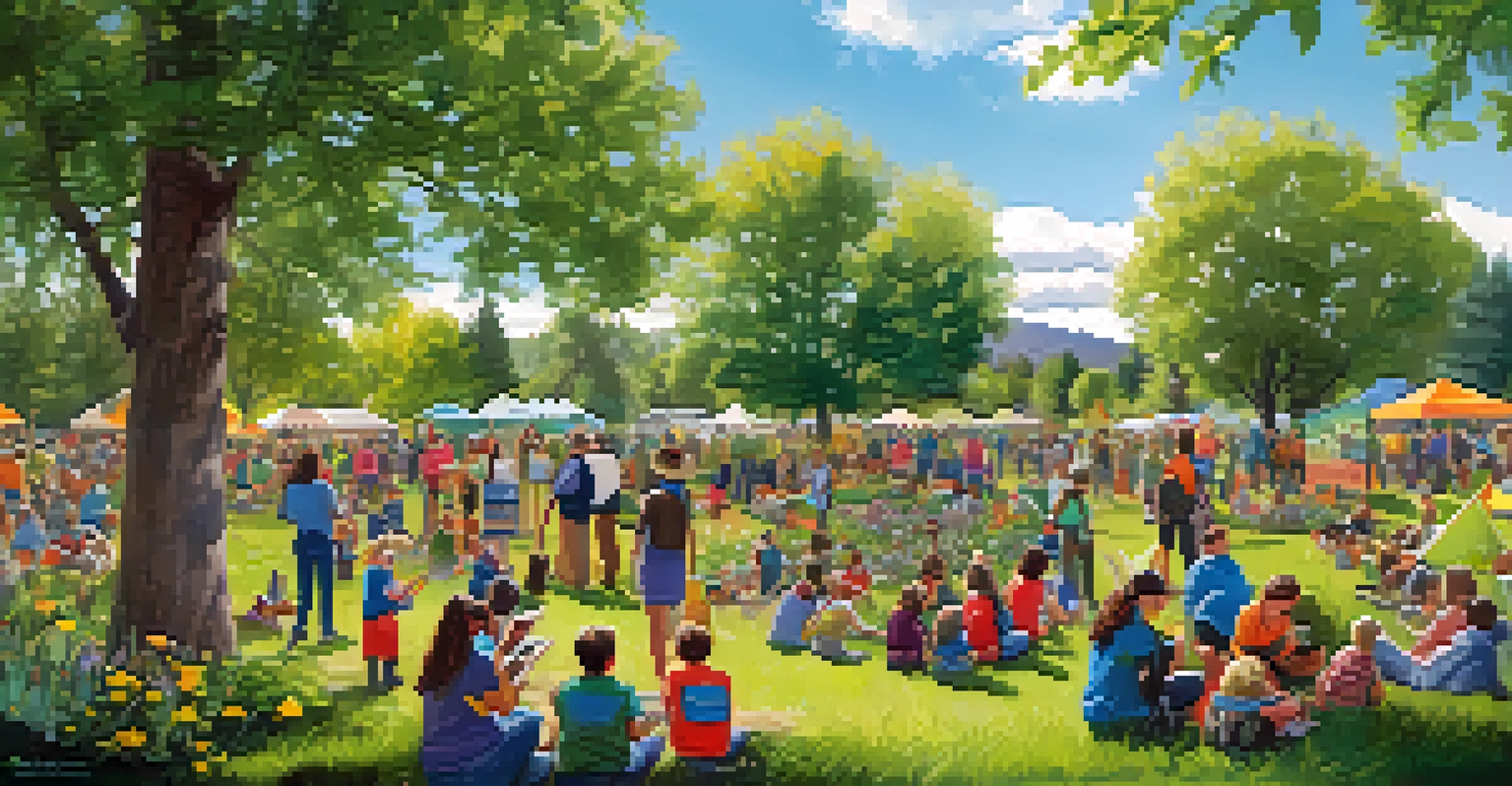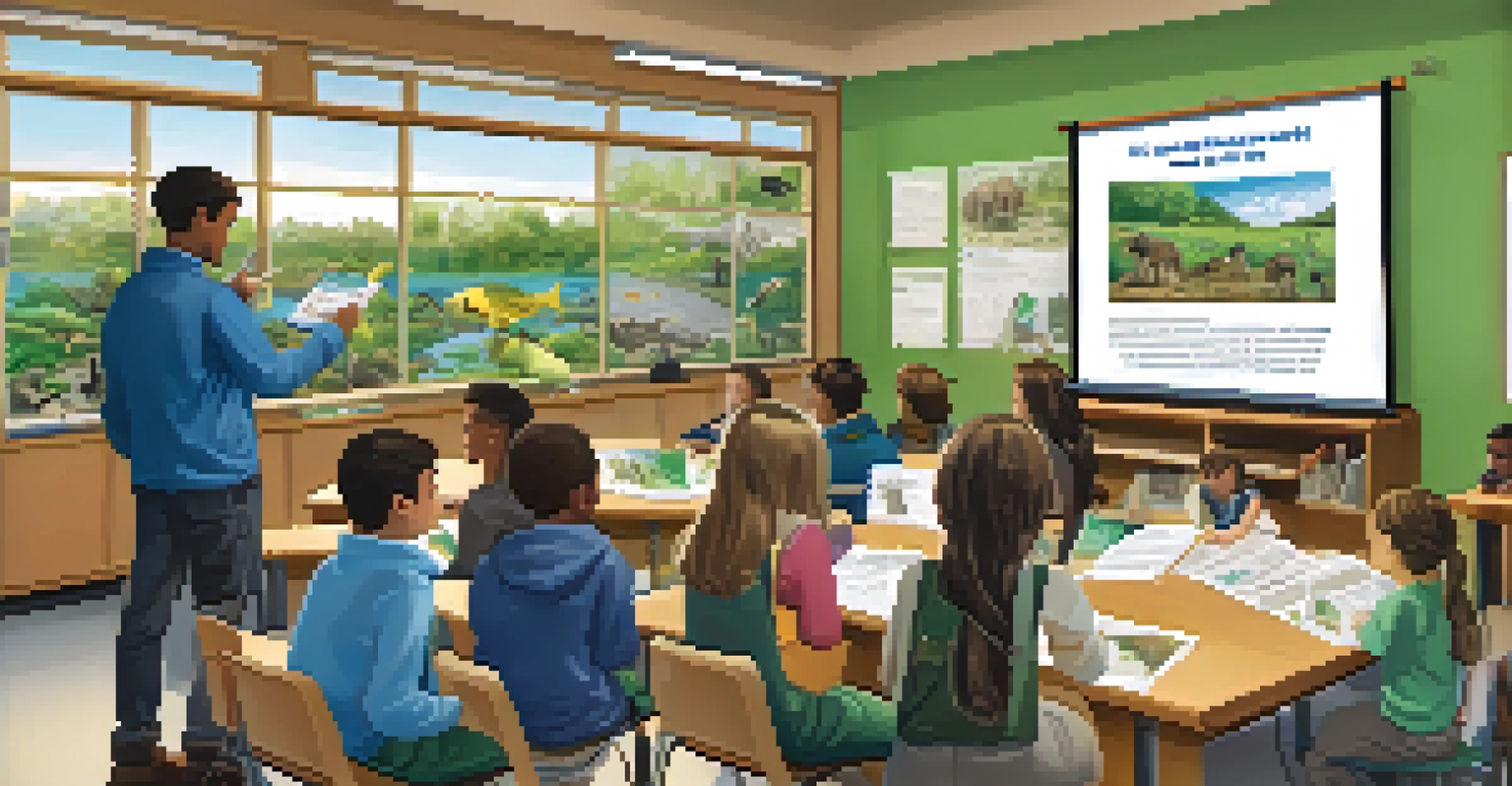Community Involvement in Colorado's Wildlife Conservation Efforts

Understanding Colorado's Unique Wildlife Challenges
Colorado is home to diverse wildlife, from majestic elk to elusive mountain lions. However, increasing urban development and climate change pose significant threats to these species and their habitats. Understanding these challenges helps communities recognize the urgent need for conservation efforts.
In every walk with nature one receives far more than he seeks.
As people move into rural areas, wildlife habitats are fragmented, leading to increased human-animal conflicts. For instance, more roads and buildings can disrupt migration patterns, making it harder for animals to find food and mates. This fragmentation is not just a problem for wildlife; it impacts entire ecosystems.
Recognizing these challenges, many Coloradans are stepping up to preserve the delicate balance of nature and protect the wildlife that enriches their environment. Their passion for conservation inspires collaborative efforts that unite communities and encourage active participation.
The Role of Local Organizations in Conservation
Local organizations play a pivotal role in spearheading wildlife conservation initiatives in Colorado. Groups like the Colorado Wildlife Federation and the Rocky Mountain Elk Foundation mobilize community members, provide education, and advocate for sustainable practices. Their grassroots efforts often serve as the foundation for larger conservation movements.

These organizations frequently organize events such as clean-up days, wildlife surveys, and educational workshops. For example, a recent event in Boulder brought together families to learn about native species while planting trees to enhance wildlife habitats. Such activities not only benefit the environment but also strengthen community bonds.
Urban Development Threatens Wildlife
Increasing urbanization in Colorado fragments wildlife habitats, leading to human-animal conflicts and jeopardizing entire ecosystems.
By fostering collaboration among local citizens, these organizations amplify the impact of conservation efforts. They empower individuals to take ownership of their local ecosystems, creating a sense of responsibility and pride in protecting Colorado's natural legacy.
Community Engagement: Volunteers Make a Difference
Volunteering is a powerful way for Colorado residents to get involved in wildlife conservation. Many community members dedicate their time to various initiatives, from habitat restoration projects to wildlife monitoring. Their hands-on efforts are vital in ensuring that local wildlife populations thrive.
The environment is where we all meet; where we all have a mutual interest; it is the one thing all of us share.
For instance, in the San Juan Mountains, volunteers recently participated in a project to restore a wetland area. Not only did this improve the habitat for birds and amphibians, but it also provided a meaningful experience for those involved. Volunteers often leave with a deeper appreciation for the natural world and a commitment to ongoing conservation efforts.
These volunteer experiences foster a sense of community and connection to the land. As individuals come together for a shared cause, they not only contribute to wildlife conservation but also create lasting friendships and a network of support for future initiatives.
Educational Programs Inspire Future Generations
Education is key to fostering a conservation-minded community. Schools and local organizations in Colorado are implementing programs that teach children about wildlife and the importance of protecting natural habitats. These initiatives help instill a sense of stewardship in young people, ensuring a brighter future for wildlife.
Programs often include hands-on activities such as field trips to wildlife reserves or interactive workshops led by experts. For example, a local high school partnered with a wildlife biologist to study the effects of climate change on local species. Students not only learned valuable science skills but also gained a deeper understanding of their role in conservation.
Local Organizations Drive Conservation
Community groups like the Colorado Wildlife Federation mobilize residents to participate in conservation efforts through education and collaborative initiatives.
By engaging youth in meaningful educational experiences, Colorado communities are cultivating the next generation of wildlife advocates. These young leaders will be better equipped to tackle future challenges and inspire a broader movement towards conservation.
Collaborative Projects: Communities Joining Forces
Collaboration is at the heart of successful wildlife conservation efforts in Colorado. Communities often come together to tackle large-scale projects, pooling resources and expertise to achieve common goals. By joining forces, they can create more effective strategies for protecting wildlife and their habitats.
A great example is the collaboration between local governments, conservation groups, and residents in the Front Range to create wildlife corridors. These corridors allow animals to move safely between habitats while reducing conflicts with human activities. Community meetings have facilitated discussions, leading to a unified vision for a healthier ecosystem.
Such collaborative efforts not only enhance wildlife conservation but also foster a sense of community pride. When individuals see the tangible results of their collective actions, it reinforces the importance of working together for a common purpose.
The Impact of Outdoor Recreation on Wildlife
Outdoor recreation is a cornerstone of life in Colorado, offering residents and visitors alike a chance to connect with nature. However, it's essential to balance these activities with wildlife conservation efforts. Education around responsible recreation can help minimize human impact on local ecosystems.
Activities like hiking, biking, and fishing can disrupt wildlife if not done thoughtfully. For example, wildlife experts recommend staying on designated trails to avoid damaging sensitive habitats. By promoting responsible recreation practices, communities can enjoy outdoor activities while safeguarding the wildlife they cherish.
Volunteer Efforts Foster Community Bonds
Volunteering in wildlife conservation projects not only aids local ecosystems but also strengthens community ties and cultivates a shared commitment to nature.
Many organizations are actively working to educate the public about these practices, ensuring that outdoor enthusiasts understand their role in conservation. By fostering a culture of respect for nature, Colorado can continue to thrive as a destination for both wildlife and recreation.
Celebrating Success Stories in Wildlife Conservation
Success stories are vital in demonstrating the effectiveness of community involvement in wildlife conservation. Across Colorado, numerous initiatives have achieved remarkable results, showcasing the power of collective action. Celebrating these successes inspires others to join in and contribute to local conservation efforts.
For instance, the recovery of the Colorado River cutthroat trout is a testament to what can be accomplished when communities come together. Local fishermen, conservationists, and scientists collaborated to restore the trout population through habitat restoration and fishing regulations. Today, these fish thrive in previously depleted waters, much to the delight of anglers and wildlife enthusiasts alike.

Highlighting such achievements not only brings recognition to dedicated community members but also motivates others to take part. When people see the real changes that can happen through their efforts, it encourages a ripple effect of involvement and commitment to conservation.